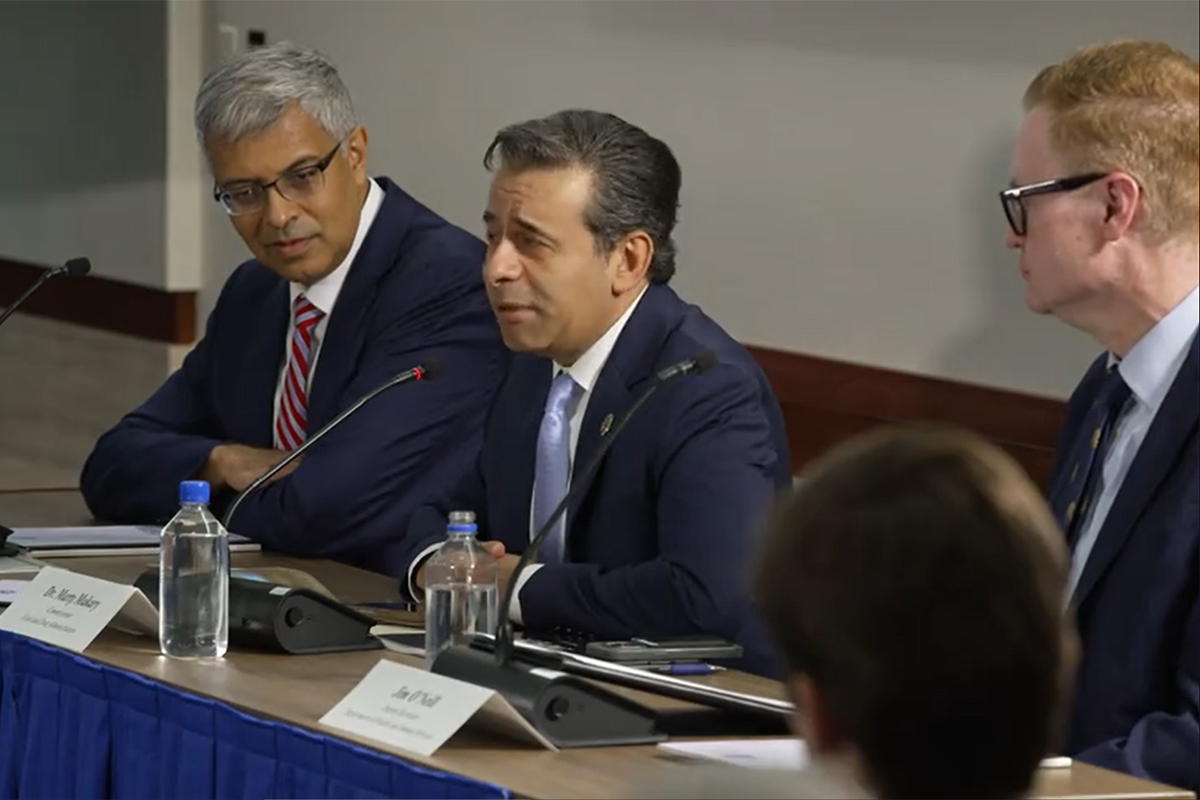The release of the Make American Healthy Again (MAHA) Commission’s strategy to Make Our Children Healthy Again features several measures that directly tie into fresh produce, nutrition guidance and farm-to-school initiatives. While the broad plan outlines more than 120 proposals to improve children’s health, some of the issues in the strategy stand out for the produce industry.
Chaired by Health and Human Services Secretary Robert F. Kennedy Jr., the commission is tasked with investigating and addressing the root causes of America’s escalating health crisis, with a focus on childhood chronic diseases.
“Today is an exciting moment for policy makers, parents and friends of the movement to make America healthy again. As we release our second report, we are thrilled for this day because we share a common desire to build a healthier future for our children and our society,” Director of Domestic Policy Vince Haley said during a Sept. 9. press conference. ”Nothing is more important than the health of our children. We therefore recognize that we cannot accept disastrous trends toward increasing childhood obesity, diabetes, neurodevelopmental disorders and other indicators of poor childhood health.”
Haley says the initiative aims to create systemic change to protect and promote children’s health through four key pillars:
- Driving innovation through research.
- Policies to realign incentives and systems.
- Increase public awareness and knowledge.
- Private sector collaboration.
“These four pillars are designed to address root causes and deliver transformative health outcomes for American children,” Haley says.
Kennedy says the U.S. is now the sickest country in the world.
“The CDC announced this week that 76.4% of Americans are suffering a chronic disease. When my uncle was =resident, it was 11%; in 1950, it was 3%. We’re the sickest country in the world, the highest chronic disease burden of any country in the world, and yet we spend more on health care than any country in the world. And yet we have the worst health outcomes,” he says.
Agriculture Secretary Brooke Rollins adds, “Over 350,000 American children have been diagnosed with diabetes. As MAHA moms … I consider myself one with four children … as MAHA moms across the entire country know, behind all of these statistics are mothers and fathers and sons and daughters and neighbors and coworkers.
“Since my confirmation as secretary of agriculture, we have been taking action on this front. As Secretary Kennedy mentioned, 12 states have now been approved, historically, to implement waivers to restrict the purchase of junk food and sweetened beverages within our food stamp program, called our Supplemental Nutrition Assistance Program, also known as food stamps. More have expressed interest, and I continue to call on all states,” she adds.
Rollins says the U.S. has an epidemic on its hands and that all states “need to innovate and put the nutrition back in the Supplemental Nutrition Assistance Program.”
Another initiative, Rollins says, is the removal of artificial colors from all products sold to K-12 schools.
“For this school year, some of America’s largest and best-known consumer brands have voluntarily committed and begun removing petroleum food dyes from their products,” she says. “This remarkable list includes Tyson Foods, PepsiCo, Smucker Kraft, Heinz, General Mills, ConAgra, Nestle and Hershey.”
Rollins also announced the revised Farm to School request for applications, saying that the initiative takes multiple steps in support of the USDA initiative to put farmers first and to promote healthy choices, healthy families and healthy outcomes.
“This year’s opportunity streamlines the application process, supports expanding access for small family farms to markets and infrastructure by facilitating connections to the Child Nutrition Marketplace, which is a huge government-funded marketplace with the opportunity to really move the market,” Rollins says.
She says the grant program’s commitment to educating children about the source of their food and support for agricultural education also helps prepare the next generation of farmers.
“We’re utilizing the depth and reach of the USDA to make America healthy again,” Rollins says. “To date, we have purchased nearly $1 billion worth of fresh seafood, fruit and vegetables from American producers through our Section 32 program. These foods are distributed to food banks and other nutrition programs across the country.
“We’ll continue to actively work with Secretary Kennedy in crafting the dietary guidelines, which will be out very, very soon … Federal nutrition advice must be sound, simple and clear,” she continues. “These guidelines will prioritize whole, healthy and nutritious foods such as whole-fat dairy, fruits, vegetables and meats, and suggest limiting highly processed foods and those high in sugar.
“We know the American food system is the safest in the world, but now we must do what it takes to make it the healthiest in the world,” Rollins adds.
Of the changes to food policy, Food and Drug Administration Commissioner Marty McCary says, “For the first time, we’re talking about the microbiome and food as medicine, micronutrients and soil and micro plastics … topics that we know are central to the health of kids.”
McCary also points to specific regulatory changes that create opportunities for growers and suppliers.
“We took the action on petroleum-based food dyes [and] approved natural dyes — four already this year,” he says. “Typically, the FDA would approve one or two every several years.”
Citrus growers may see a direct benefit. “We changed the Brix requirement for sugar with orange juice, allowing more American oranges to be used for orange juice instead of importing oranges as frequently as was required by this arcane regulation,” McCary says.
In a broader strategy, nutrition policy is being reevaluated.
“We’re working with USDA to change the broken food pyramid, maybe one of the greatest sources of misinformation in modern American history,” McCary says.
With spotlights on food as medicine, soil health, natural food dyes and nutrition policy reform, the MAHA Commission’s strategy signals a new policy environment where fruits, vegetables and plant-based nutrition are central to the national conversation around children’s health.
The International Fresh Produce Association says it welcomes the commission’s focus on nutrition and calls for a produce-first national health strategy.
“IFPA welcomes the publication of the Make America Healthy Again (MAHA) Commission’s second report, which marks an important step in elevating nutrition as a national public health priority,” IFPA said in a release. “We applaud the Commission’s recognition of the vital role ‘whole, healthy’ foods like fresh produce play in improving health outcomes and reducing healthcare costs. Simply put, you cannot make America healthy again without fruits and vegetables.”
IFPA says it urges policymakers to take bold, practical action.
”Our evidence-based policy recommendations call for the Department of Health and Human Services to embed produce prescriptions as a covered benefit within federal health programs such as Medicare, Medicaid and the Department of Veterans Affairs; urge Congress and USDA to expand the Fresh Fruit and Vegetable Program to all schools and improve fresh produce procurement options in feeding programs; ask FDA to prioritize clear and transparent front-of-pack labeling to help consumers make informed choices; and support all production systems including voluntary, incentive-based regenerative agriculture policies that focus on strengthening soil health, biodiversity and water efficiency while ensuring a sustainable produce supply,” IFPA said in the release.
The association says it will focus its efforts on both administrative and congressional pathways in the months ahead to make its recommendations a reality. “The fresh produce industry stands ready to partner with the Trump administration, lawmakers, and nutrition and agricultural leaders to ensure every American has access to the fruits and vegetables they need for a healthier life.”


















